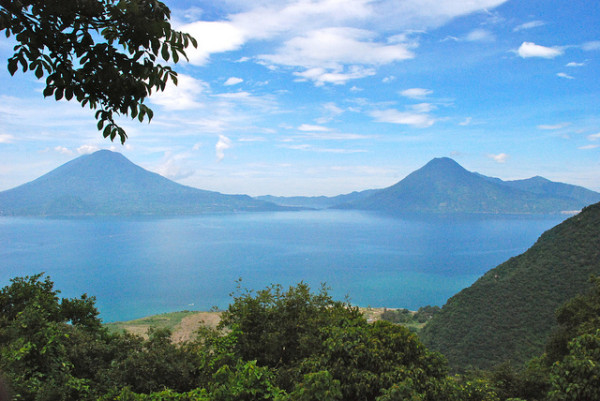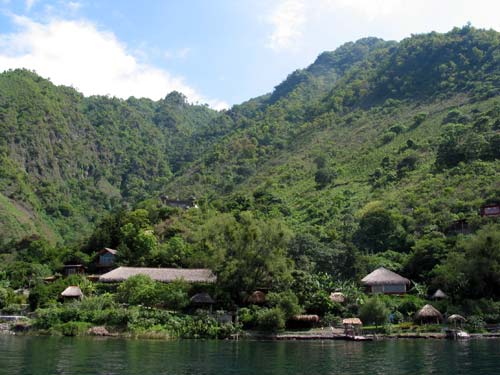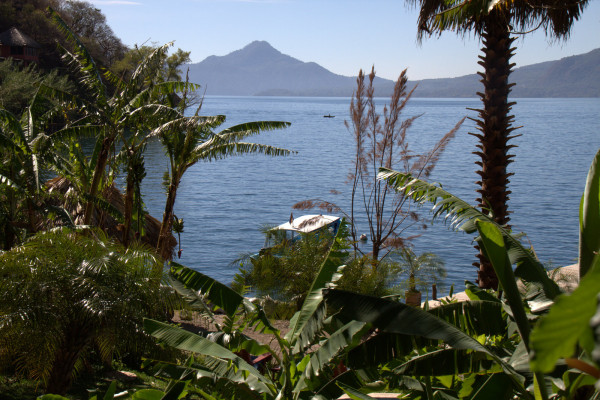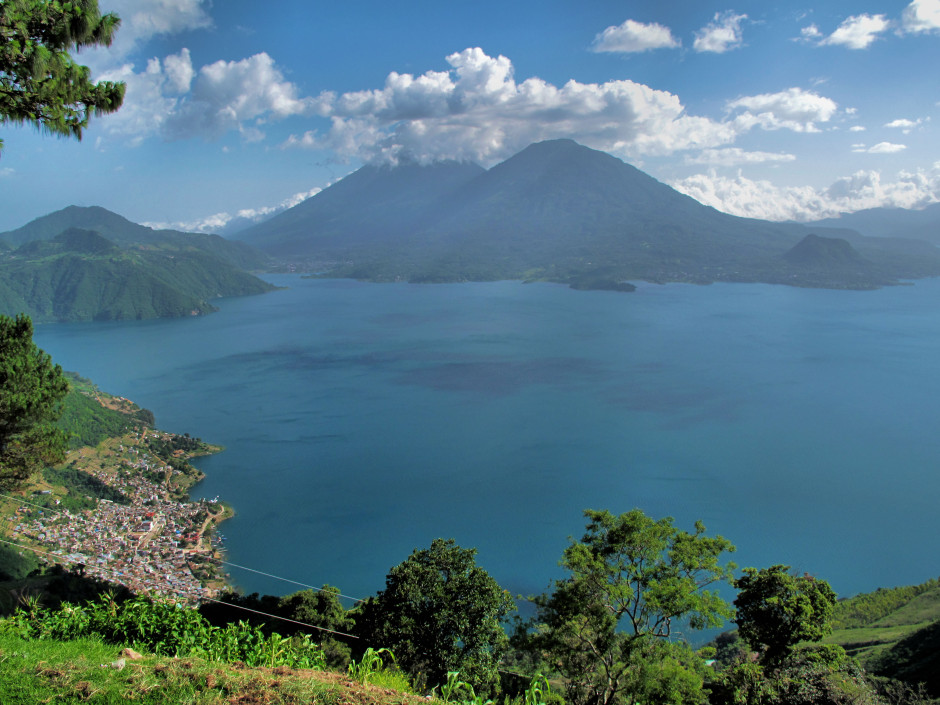Nestled in a serene and picturesque valley 5,000 feet above sea level and framed by three heavily wooded volcanoes, Lake Atitlan is one of Guatemala’s most majestic tourist destinations, often compared to Lake Como in Italy.
Sparkling blue on a sunny day and brooding on a cloudy one, it’s Guatemala’s deepest body of water. Ringed by coffee and avocado orchards and Mayan villages, it’s 12 miles long and four to seven miles wide. Two hours away by car from the noise and diesel fumes of the capital, Guatemala City, Lake Atitlan seems so remote and peaceful that it may as well be a million miles away.

Formed by a volcanic eruption about 84,000 years ago, it’s a watery oasis where you can leave your troubles behind and remove yourself from the distractions of modern civilization.
My two companions and I decided to spend a couple of days in this green and temperate area of the Central Highlands. Our base was Villa Sumaya, a New Age yoga retreat on the lake’s shore. Officially part of the Mayan village of Santa Cruz la Laguna, it’s accessible by boat from the nearby town of Panajachel. There are no roads around the lake.
We reached the resort — a complex of thatch-roofed buildings whose simply-appointed rooms have neither telephones nor television sets — in the afternoon, when the lake is choppy. The flimsy water taxi that brought us here was packed with an assortment of foreigners with backpacks and local Mayan women clad in embroidered dresses and blouses.
Villa Sumaya is owned and managed by an American woman, an aging flower child who might have stepped out of a 1960s hippy commune in California. In keeping with her sensibilities, the hotel caters to vegetarians, though meat dishes are available. All meals are served in buffet style, as in a kibbutz. Afternoon tea aficinonados can choose from a substantial selection of herbal teas in the dining room, which offers an enchanting view of the lake.

The manicured grounds are immaculate, with flower beds, flowering bushes, palm trees, potted tropical plants and a herb garden that reminded me of a beautifully landscaped kibbutz I once visited near the Dead Sea in Israel.
On the premises are a pool, a hot tub and a sauna. Pergolas and hammocks enable guests to bask in the bliss of year-round spring like weather.

In Villa Sumaya, the troubles that beset the world — from the civil war convulsing Syria to the turmoil roiling eastern Ukraine — are easily shelved and forgotten. Yoga classes, massages, swimming (the lake is calm in the morning) and reading make the days fly by pleasantly.
Adventurous souls can stroll along the shoreline, past bamboo groves and banana plants, to the base of Santa Cruz la Laguna, which is set high up in the mountains and can be reached via a steep and winding road.
Santa Cruz la Laguna, though somewhat quaint, is bereft of the handicraft and textile shops that enliven adjacent towns like San Juan and San Pedro, both of which can be reached by boat from Villa Sumaya’s pier.
San Juan, the smaller town, is dotted with art galleries and textile factory outlets selling bold, bright water colors and oil paintings of Guatemala’s indigenous people and Lake Atitlan. San Pedro, a five-minute ride by tuk-tuk over a rutted road, is a bigger version of San Juan.
Much to my surprise, I found an Israeli restaurant in San Pedro. Hummus-ya would not be out of place in Tel Aviv or Jerusalem. Modestly furnished, its outdoor terrace offers fine views of the lake.

Scanning the menu, I came upon familiar Middle Eastern dishes such as falafel, shakshuka (a Yemenite confection of eggs blended with tomatoes) and labaneh (cream cheese slathered in olive oil and sprinkled with zaatar, a fragrant herb mixture). I ordered hummus, which was tasty and served with two warm pitas.
The food brought back warm memories of visits to Israel, but I confess it was a little strange eating hummus deep in the heart of Guatemala.
